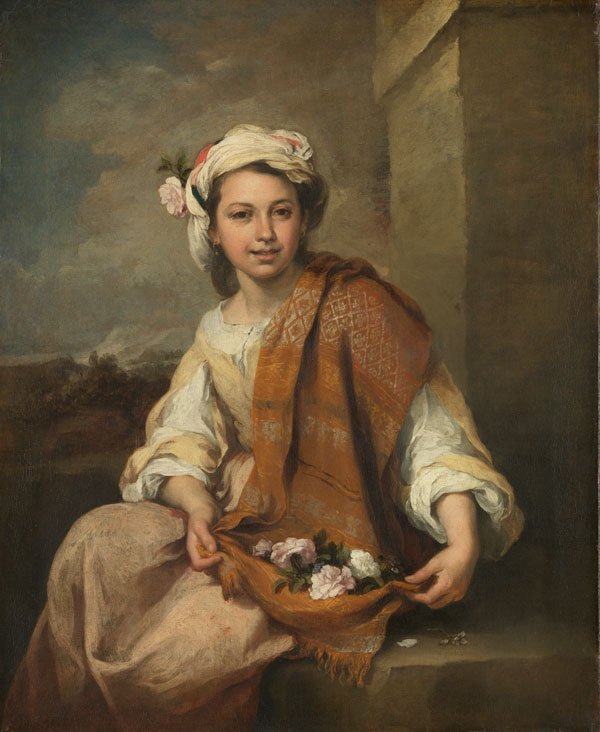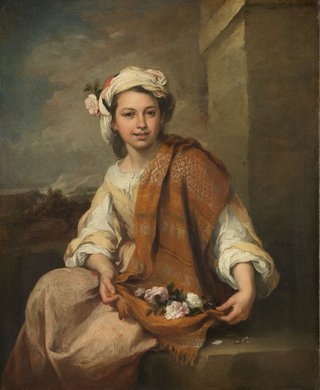

-
Acquisition
Bourgeois Bequest, 1811
-
Accession number
DPG199
-
Artist
Bartolomé Esteban Murillo
-
Date
1665-70
-
Dimensions
120.7 x 98.3 cm
-
Materials
Oil on canvas
-
Notes
Adopted by Allied-Lyons PLC, 1991
The identity of this young woman, often admired for her elusive half smile, has been the subject of much discussion since the eighteenth century. She has been variously described as a personification of Spring, a flower seller, a Gypsy girl and even a courtesan. The Flower Girl has also been identified as the only daughter, Francisca María (1655-1710), of the Spanish painter, Bartolomé Esteban Murillo (1617-82). She entered a Dominican convent in 1671 and took the name Sister Francisca María de Santa Rosa after Saint Rose of Lima. If the figure does represent Murillo’s daughter, then the roses could be symbolic of the new name she had taken, thus combining in a single image the artist’s own religious and familial reference, along with allusions to hope and new beginnings that accompany representations of Spring.
X-ray imaging has revealed another, completely different image beneath the paint surface of The Flower Girl. When the painting is positioned on its side, the bottom half of the figure of the Virgin Mary is visible, a composition that corresponds almost exactly to another painting by Murillo, The Immaculate Conception of El Escorial now in the Museo Nacional del Prado, Madrid. This X-ray was the first piece of evidence found to show Murillo recycling his canvases. While the Prado painting was not dated by the artist, surviving drawings show that Murillo was exploring different versions of this composition from 1664 onwards. The warm, diffused lighting and the fluid, intuitive handling of the paint, particularly in the slashed sleeves of the girl’s dress, are characteristic of Murillo's 'soft focus' style when he was at the height of his career, suggesting a date of around 1665-70.

Want to use or download this artwork?
For personal use - Download artwork
For commercial use - Purchase a licence & download on Bridgeman images